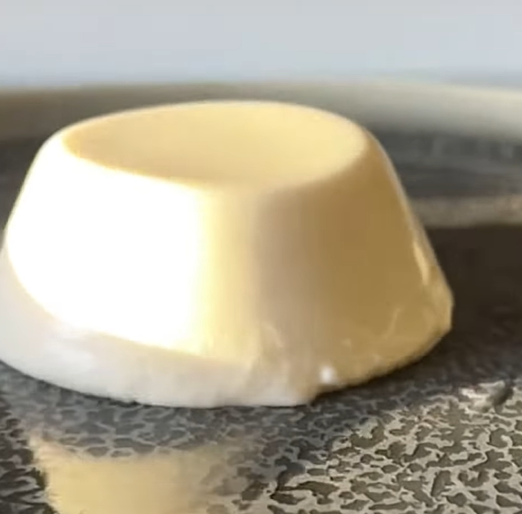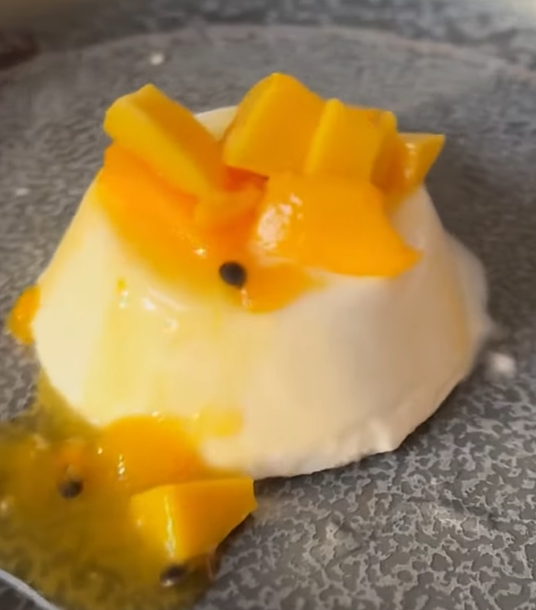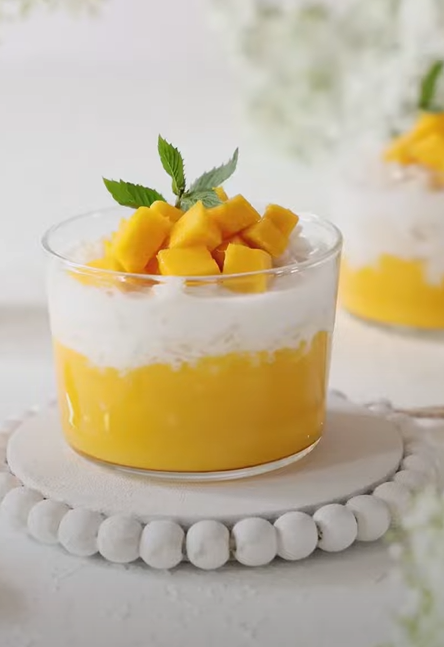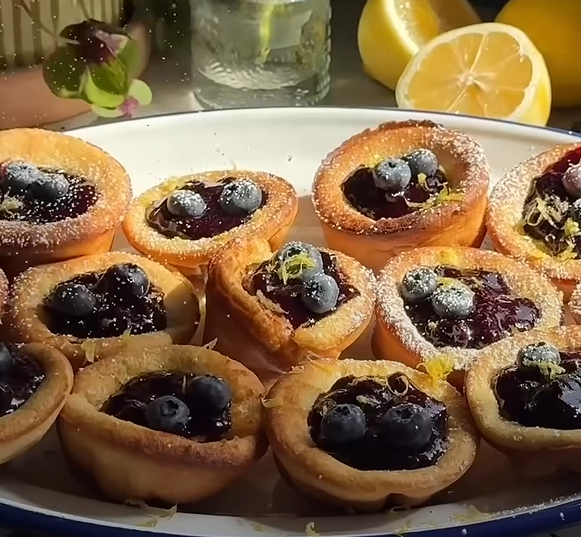There’s something magical about the combination of coconut and passion fruit that instantly transports me to a tropical paradise. When I first discovered this pairing in panna cotta form, I knew I had stumbled upon dessert perfection. The creamy, silky texture of coconut-infused panna cotta paired with the bright, tangy burst of passion fruit creates a symphony of flavors that never fails to impress my guests.
Panna cotta, which literally means “cooked cream” in Italian, has become one of my absolute favorite desserts to prepare. Unlike many other desserts that require precise timing and temperature control, panna cotta is surprisingly forgiving and elegant in its simplicity. The beauty of this coconut and passion fruit version lies not only in its stunning presentation but also in how the tropical flavors complement each other so beautifully.
Understanding Panna Cotta: Key Terms and Techniques
Before diving into the recipe, let me share some essential terms that will help you master this dessert:
Gelatin : A protein derived from collagen that acts as a setting agent. It’s what gives panna cotta its characteristic wobble and smooth texture.
Blooming : The process of sprinkling gelatin over cold liquid to allow it to absorb moisture and swell before dissolving.
Tempering : Gradually adjusting the temperature of ingredients to prevent curdling or seizing when combining hot and cold mixtures.
Inversion : The technique of turning out the set panna cotta from its mold onto a serving plate.
Coulis : A smooth sauce made from pureed fruit, often strained to remove seeds and pulp.
The Perfect Coconut and Passion Fruit Panna Cotta Recipe
Ingredients Breakdown
| Component | Ingredient | Quantity | Purpose |
|---|---|---|---|
| Base | Heavy cream | 2 cups | Primary texture and richness |
| Base | Coconut milk (full-fat) | 1 cup | Tropical flavor and creaminess |
| Base | Granulated sugar | 1/2 cup | Sweetness and texture |
| Base | Unflavored gelatin | 2 packets (14g) | Setting agent |
| Base | Cold water | 1/4 cup | For blooming gelatin |
| Base | Vanilla extract | 1 teaspoon | Flavor enhancement |
| Base | Coconut extract | 1/2 teaspoon | Intensified coconut flavor |
| Topping | Fresh passion fruit | 6-8 fruits | Tangy contrast and visual appeal |
| Topping | Powdered sugar | 2 tablespoons | Balancing acidity |
| Garnish | Toasted coconut flakes | 1/4 cup | Texture and presentation |
| Garnish | Fresh mint leaves | 8-10 leaves | Color contrast and aroma |
Equipment Essentials
| Equipment | Purpose | Alternative |
|---|---|---|
| 6-8 ramekins (4 oz each) | Individual serving molds | Small glasses or cups |
| Medium saucepan | Heating cream mixture | Heavy-bottomed pot |
| Fine-mesh strainer | Removing lumps and foam | Cheesecloth |
| Whisk | Mixing ingredients | Fork (less efficient) |
| Small bowl | Blooming gelatin | Any small container |
| Measuring cups | Accurate measurements | Kitchen scale |
| Rubber spatula | Scraping and folding | Wooden spoon |
Step-by-Step Preparation Method
Preparing the Coconut Panna Cotta Base
- Bloom the gelatin: In a small bowl, sprinkle the gelatin over cold water. Let it sit for 5 minutes until it becomes spongy and absorbed all the liquid. This step is crucial for achieving the perfect texture.
- Heat the cream mixture: In a medium saucepan, combine the heavy cream, coconut milk, and sugar. Place over medium heat and stir occasionally until the sugar completely dissolves and the mixture begins to steam. Don’t let it boil—this can affect the final texture.
- Incorporate the gelatin: Remove the cream mixture from heat. Add the bloomed gelatin and whisk vigorously until completely dissolved. The mixture should be smooth with no visible gelatin pieces.
- Add flavor extracts: Stir in the vanilla and coconut extracts. The aroma at this point should be heavenly—rich, creamy, and distinctly tropical.
- Strain the mixture: Pour the mixture through a fine-mesh strainer to remove any lumps or foam. This step ensures your panna cotta will have that signature silky texture.
- Divide and chill: Carefully pour the mixture into your prepared ramekins, filling each about 3/4 full. Cover with plastic wrap and refrigerate for at least 4 hours, though overnight is preferable.
Creating the Passion Fruit Coulis
While your panna cotta sets, prepare the passion fruit topping:
- Extract the pulp: Cut the passion fruits in half and scoop out all the pulp, including seeds, into a bowl.
- Strain if desired: For a smoother coulis, you can strain the pulp through a fine-mesh sieve to remove seeds. However, I personally love the texture that the seeds provide.
- Sweeten to taste: Add powdered sugar gradually, tasting as you go. The amount needed depends on the tartness of your passion fruits.
- Chill until serving: Store the coulis in the refrigerator until ready to use.
Nutritional Information and Variations
Nutritional Breakdown (Per Serving)
| Nutrient | Amount | % Daily Value |
|---|---|---|
| Calories | 285 | 14% |
| Total Fat | 22g | 28% |
| Saturated Fat | 16g | 80% |
| Cholesterol | 65mg | 22% |
| Sodium | 25mg | 1% |
| Total Carbohydrates | 18g | 7% |
| Dietary Fiber | 1g | 4% |
| Sugars | 17g | – |
| Protein | 4g | 8% |
| Vitamin C | 15mg | 17% |
| Calcium | 120mg | 9% |
Flavor Variations
| Variation | Modification | Flavor Profile |
|---|---|---|
| Mango-Coconut | Replace passion fruit with mango puree | Sweet and tropical |
| Lime-Coconut | Add lime zest and juice | Citrusy and refreshing |
| Chocolate-Coconut | Add 2 oz melted dark chocolate | Rich and indulgent |
| Vanilla-Coconut | Increase vanilla extract to 2 tsp | Classic and elegant |
| Rum-Coconut | Add 2 tbsp dark rum | Sophisticated and warming |
Serving and Presentation Tips
The presentation of your coconut and passion fruit panna cotta can elevate this dessert from simple to spectacular. Here are my tried-and-tested serving suggestions:
Unmolding Techniques
To successfully unmold your panna cotta, I recommend the warm water method. Dip the bottom of each ramekin in warm (not hot) water for about 10 seconds. Run a thin knife around the edges, then place a serving plate over the ramekin and quickly invert. The panna cotta should release with a gentle shake.
Plating Suggestions
- Classic presentation: Unmold onto individual plates and spoon passion fruit coulis around the base
- Layered approach: Serve directly in clear glasses with alternating layers of panna cotta and coulis
- Garnish artfully: Top with toasted coconut flakes, fresh mint, and a few passion fruit seeds for texture contrast

Complementary Accompaniments
I love serving these panna cottas with:
- Delicate shortbread cookies
- Fresh tropical fruit salad
- Toasted coconut macaroons
- Light sparkling water with lime
- Herbal teas like chamomile or mint
Troubleshooting Common Issues
Through years of making panna cotta, I’ve encountered and solved numerous problems. Here’s my troubleshooting guide:
Texture Problems and Solutions
| Problem | Cause | Solution |
|---|---|---|
| Too firm/rubbery | Too much gelatin | Reduce gelatin by 1/4 packet next time |
| Won’t set | Insufficient gelatin or too hot when added | Ensure proper blooming and temperature |
| Grainy texture | Gelatin not fully dissolved | Whisk more thoroughly and strain mixture |
| Lumpy appearance | Improper straining | Always strain through fine-mesh sieve |
| Separated layers | Temperature shock | Temper ingredients gradually |
Flavor Enhancement Tips
The key to exceptional panna cotta lies in balancing flavors and textures. I’ve learned that using full-fat coconut milk is non-negotiable—it provides the richness that makes this dessert truly special. The passion fruit should be ripe but not overripe, with a good balance of sweetness and acidity.
Storage and Make-Ahead Tips
One of the reasons I adore this dessert is its make-ahead friendly nature. Panna cottas can be prepared up to three days in advance, making them perfect for entertaining. Store them covered in the refrigerator, and prepare the passion fruit coulis the day you plan to serve.
For longer storage, you can freeze panna cottas for up to one month. Thaw them overnight in the refrigerator before serving. However, I find the texture is best when served fresh.
Seasonal Adaptations and Ingredient Substitutions
Seasonal Recipe Modifications
| Season | Fruit Substitute | Additional Elements |
|---|---|---|
| Spring | Strawberry coulis | Edible flowers for garnish |
| Summer | Peach or apricot puree | Fresh berries |
| Fall | Apple-cinnamon compote | Crushed gingersnaps |
| Winter | Pomegranate seeds | Candied orange peel |
Dietary Accommodations
For those with dietary restrictions, this recipe is surprisingly adaptable:
- Dairy-free: Replace heavy cream with coconut cream and use agar-agar instead of gelatin
- Sugar-free: Substitute with stevia or monk fruit sweetener
- Vegan: Use agar-agar and plant-based milk alternatives
The Science Behind Perfect Panna Cotta
Understanding the science behind panna cotta has helped me achieve consistent results every time. Gelatin works by forming a network of protein chains that trap liquid, creating that characteristic wobble. The ratio of liquid to gelatin is crucial—too little and it won’t set, too much and it becomes rubbery.
Temperature control is equally important. Adding gelatin to liquid that’s too hot can break down its setting properties, while liquid that’s too cool won’t allow proper dissolution. The sweet spot is around 160°F (71°C).
Cultural Significance and Recipe Origins
While panna cotta originated in the Piedmont region of Northern Italy, my coconut and passion fruit variation draws inspiration from tropical cuisines around the world. The combination reflects the global nature of modern dessert making, where traditional techniques meet exotic flavors.
In many tropical countries, coconut and passion fruit are considered complementary flavors, often appearing together in traditional desserts. This panna cotta bridges that cultural gap, bringing together Italian technique with tropical soul.
Expert Tips for Success
After countless batches, here are my most valuable tips:
- Quality ingredients matter: Use the best coconut milk and freshest passion fruits you can find
- Temperature precision: Invest in a thermometer for consistent results
- Patience is key: Don’t rush the setting process
- Practice the unmolding: Start with less important occasions to perfect your technique
- Taste as you go: Adjust sweetness and flavor intensity to your preference
Wine and Beverage Pairings
While I don’t recommend alcoholic pairings, this dessert pairs beautifully with various non-alcoholic beverages:
- Sparkling water with lime: Cleanses the palate between bites
- Coconut water: Enhances the tropical theme
- Green tea: Provides a pleasant contrast to the richness
- Fresh fruit juices: Complement the tropical flavors
Frequently Asked Questions
Q: Can I use powdered gelatin instead of packets? Yes, absolutely! Use 2 teaspoons of powdered gelatin, which equals about 2 packets. The blooming and dissolving process remains the same.
Q: Why did my panna cotta separate into layers? This usually happens when the mixture is too hot when poured or when ingredients are at drastically different temperatures. Always allow the mixture to cool slightly before pouring and ensure all ingredients are at room temperature before combining.
Q: Can I make this recipe without coconut extract? Certainly! While coconut extract intensifies the coconut flavor, you can omit it or substitute with additional vanilla extract. The coconut milk provides plenty of coconut flavor on its own.
Q: How do I know when the panna cotta is properly set? A properly set panna cotta should have a slight wobble when gently shaken but shouldn’t be liquid in the center. It should hold its shape when unmolded but still be tender to the touch.
Q: What’s the best way to strain passion fruit pulp? Use a fine-mesh sieve and press the pulp through with the back of a spoon. However, I personally prefer keeping some seeds for texture and visual appeal.
Q: Can I use coconut cream instead of coconut milk? Yes, but reduce the heavy cream proportionally as coconut cream is much richer. Start with 1/2 cup coconut cream and 1.5 cups heavy cream.
Q: How long does the passion fruit coulis keep? Fresh passion fruit coulis keeps in the refrigerator for up to 5 days. You can also freeze it for up to 3 months.
Q: Is it possible to make this recipe sugar-free? Absolutely! Replace the granulated sugar with your preferred sugar substitute. Stevia, monk fruit, or erythritol work well, but you may need to adjust quantities as these sweeteners have different sweetness levels.
Q: What can I do if my panna cotta won’t unmold? Don’t panic! Dip the bottom of the ramekin in warm water for a few more seconds, or try placing a warm, damp towel around the sides. As a last resort, serve it directly in the ramekin—it will taste just as delicious.
Q: Can I make mini panna cottas for parties? Yes! Use smaller molds or even shot glasses for bite-sized portions. Reduce the setting time to about 2-3 hours for smaller portions.
This coconut and passion fruit panna cotta has become my signature dessert, and I hope it becomes yours too. The combination of creamy coconut and tangy passion fruit creates a perfect balance that never fails to impress. Whether you’re hosting a dinner party or simply treating yourself to something special, this dessert delivers elegance and flavor in every spoonful.
Remember, the key to perfect panna cotta lies in patience, quality ingredients, and attention to detail. Don’t be discouraged if your first attempt isn’t perfect—even experienced cooks sometimes face challenges with this dessert. With practice, you’ll develop an intuitive feel for the process and be able to create stunning panna cottas that rival those from the finest restaurants.
The beauty of this recipe lies not just in its taste but in its versatility. Feel free to experiment with different fruit combinations, adjust sweetness levels to your preference, and make it your own. After all, the best recipes are those that reflect your personal taste and bring joy to those who share them with you.


